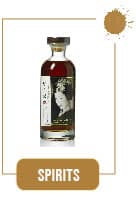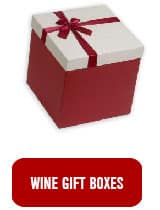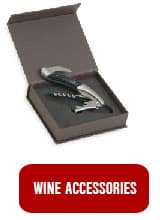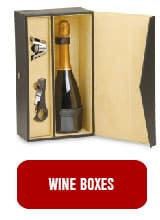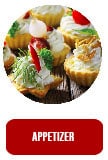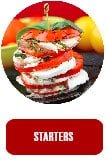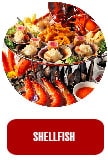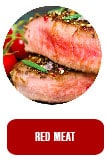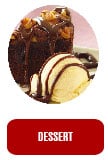No products
list of wineries
-
celler capcanes
Capçanes dates back to the 19th century and was one of the many victims of the grape vine infection Phylloxera in Spain.
Capçanes winery in Montsant is the very first winery in Spain to produce a kosher wine in the 20th century.
-
Celler de l’Encastell
Celler de l’Encastell owns 2.5 hectares in the aforementioned Mas d’En Caçador, a steep vineyard just outside of the town of Porrera.
Their vines, roughly equal proportions of Garnacha and Carinyena, range in age from 60 to 90 years old planted on centuries-old terraces hewn from the llicorela soils famous throughout the region.
-
Celler Vall Llach
From its founding in the early 1990s, by famed Spanish singer Lluis Llach and notary Enric Costa, Celler Vall Llach has been governed by a commitment to rigor and quality. The winery lies in the tiny village of Porrera, in southern Catalonia, in the highly-acclaimed D.O.Q. Priorat.
The magnificent century-old vineyard estates of Celler Vall Llach are home to 60- to 90-year-old Carinena and Garnacha vines.
The resulting wines—Vall Llach, Idus, and Embruix— have received high critical acclaim. Vall Llach, the winery's flagship wine, is a blend of Cariñena, Merlot and Cabernet Sauvignon.
-
Cellers Ripoll Sans
Cellers Ripoll Sans was created in the year 2000 by restoring the old family winery situated in Gratallops.
Its production is based on grape selections from its own best vineyards, some as much as 90 years old, cultivated on hillsides with slate soil.
-
Ceretto
The Ceretto winery was established by Riccardo Ceretto in the 1930’s. In 1968, Riccardo’s sons, Bruno & Marcello, purchased their first estate-owned vineyard Bricco Asili in Barbaresco, which was the start of many extraordinary vineyards and wineries to come.
The third-generation children of Bruno and Marcello, Lisa, Roberta, Alessandro and Federico, joined the company in 1999. Federico currently sits as the company’s CEO, Roberta its marketing director, and Alessandro is head of winemaking for the family’s four Langhe estates. Focused on sustainability, in 2015 all wines obtained the organic certification in the EU and the farms many of its vineyards biodynamically as well.
-
CHAMPAGNE GOSSET
Founded in 1584, Gosset is the oldest sparkling wine house in Champagne.
Rich and robust champagnes, made using a large percentage of older reserve wines.
-
champagne lanson
Champagne Lanson is a Champagne producer that is based in Reims in the Champagne region. Since 2006, it has been owned by the Lanson-BCC group that is headed by Bruno Paillard (who also owns the Bruno Paillard champagne house).
-
Charles Heidsieck
The Heidsieck house is one of the most popular champagne brand.
It was the official champagne supplier of the King of Prussia and Tsar Nicolas II.
-
Charles Lachaux
Charles Lachaux launched his micro-négoce in Burgundy, driven by his passion for Aligoté. After blind tasting exceptional Aligotés, like d’Auvenay’s Sous Châtelet and others from peers such as Nicolas Faure and Sylvain Pataille, he recognized the potential of the grape. Despite the Arnoux family’s history of selling off their Aligoté grapes, Charles sought to vinify them once again.
In 2018, amidst significant changes at the Domaine Arnoux-Lachaux, Charles opted to create a separate micro-négoce, purchasing grapes from the family domaine to avoid internal pressure. He began with five wines, including Aligoté, and expanded modestly in subsequent years. His wife, Louise, designed the label, featuring a rose symbol for their daughter, Rose.
The winemaking style for the Charles Lachaux négoce wines is similar to the domaine’s, with minimal intervention, natural fermentations, and limited sulfur use. However, the négoce wines are aged for less time (under a year) compared to the domaine wines, resulting in more fruit-driven, ready-to-drink styles. Charles also implements whole-cluster fermentation and gentle extraction methods for his reds.
Overall, Charles Lachaux has become a pioneer in Burgundy, not only with his progressive viticulture but also in crafting wines of transparency, precision, and soul.
-
Château Angélus
Production 110'000 bottles;
Surface 23 ha ;
Second wine : Carillon de l'Angélus;
Grape variety 5% cabernet sauvignon, 50% merlot, 45% cabernet franc ;
Best vintage 2010, 2009, 2005, 2003, 2000, 1990.
-
Château Arnauld
Production 120'000 bottles ;
Surface 24 ha ;
Second wine Comte d'Arnauld;
Wine variety 50% merlot, 50% cabernet sauvignon;
Best vintages 2010, 2000, 1989.
-
Château Ausone
Château Ausone has been in the same family for several centuries, and by the extreme care taken, have managed to preserve some very vines.
The hundred-year-old vines can produce 20 tonneaux of a wine which has for a very long time headed the great wines of Saint-Emilion and indeed the great wines in France.
Production 22'000 bottles ;
Surface 7 ha ;
Second wine Chapelle d'Ausone;
Grape variety 50% merlot, 50% cabernet franc ;
Best vintages 2010, 2009, 2005, 2003, 2000, 1929.
100 % in stock
All of our products are avalaible on stock
Quick delivery
Your order will be shipped in 48 hours in a packaging provided for this purpose
Free delivery
Free shipment fees for orders over 1000 CHF (in Switzerland)
Free pickup in Geneva
In order to avoid shipping fees, your order can be picked up directly in our cellars or shop in Geneva
Your fidelity rewarded
2 % off







